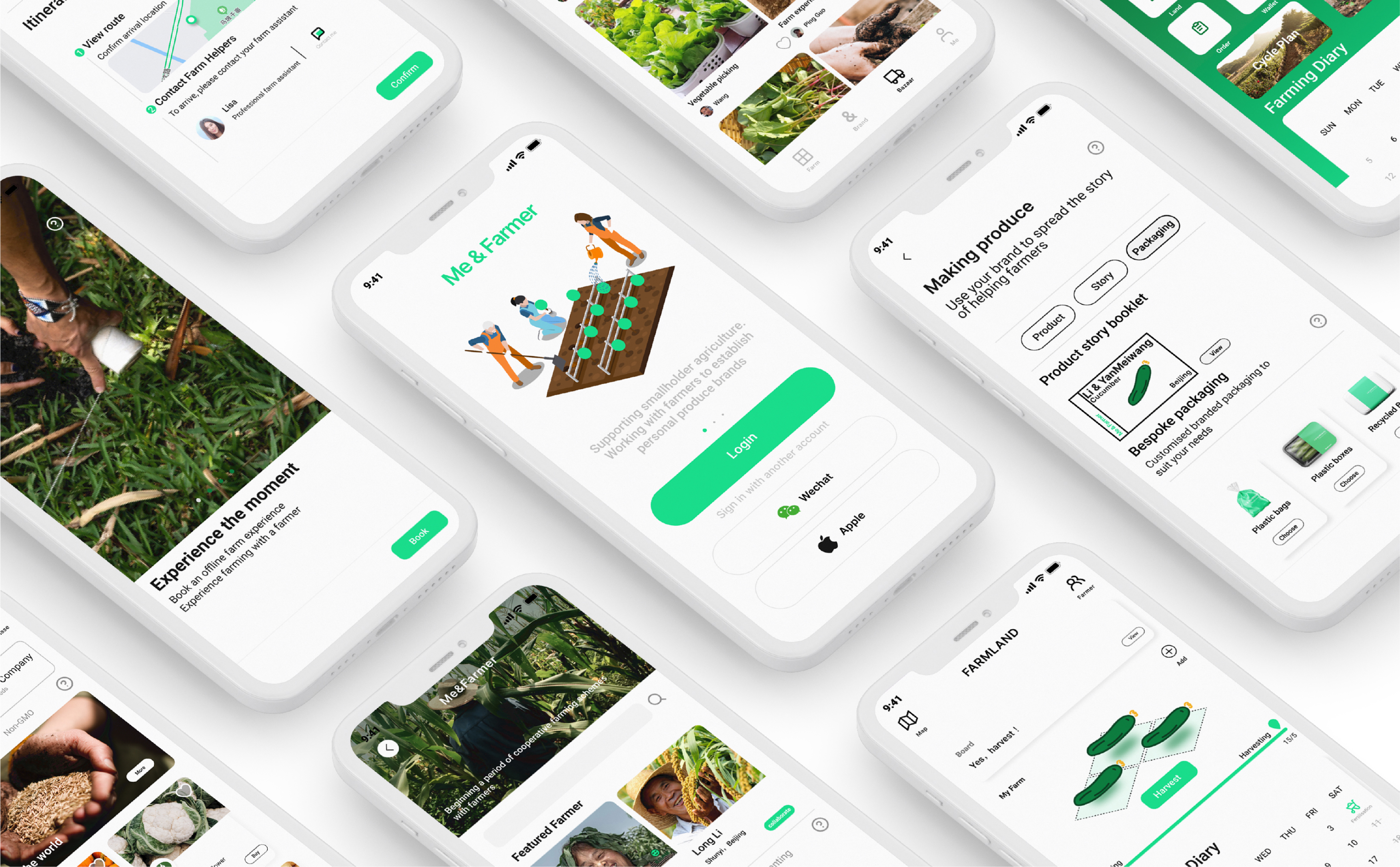Project Overview
The new service ecosystem connects consumers, smallholders, and government departments. Consumers can collaborate with smallholders to create internet-based agricultural brands, support the government in promoting the traditional culture of green farming and breeding, and reduce the role of middlemen in selling agricultural products—bringing greater economic benefits to smallholders
Resaerch Plan
Smallholder farming in China has seen limited development over the past few decades—but why? Why are increasing numbers of consumers reluctant to purchase products from smallholder farms? And what unique value can smallholder farming bring to urban agriculture?
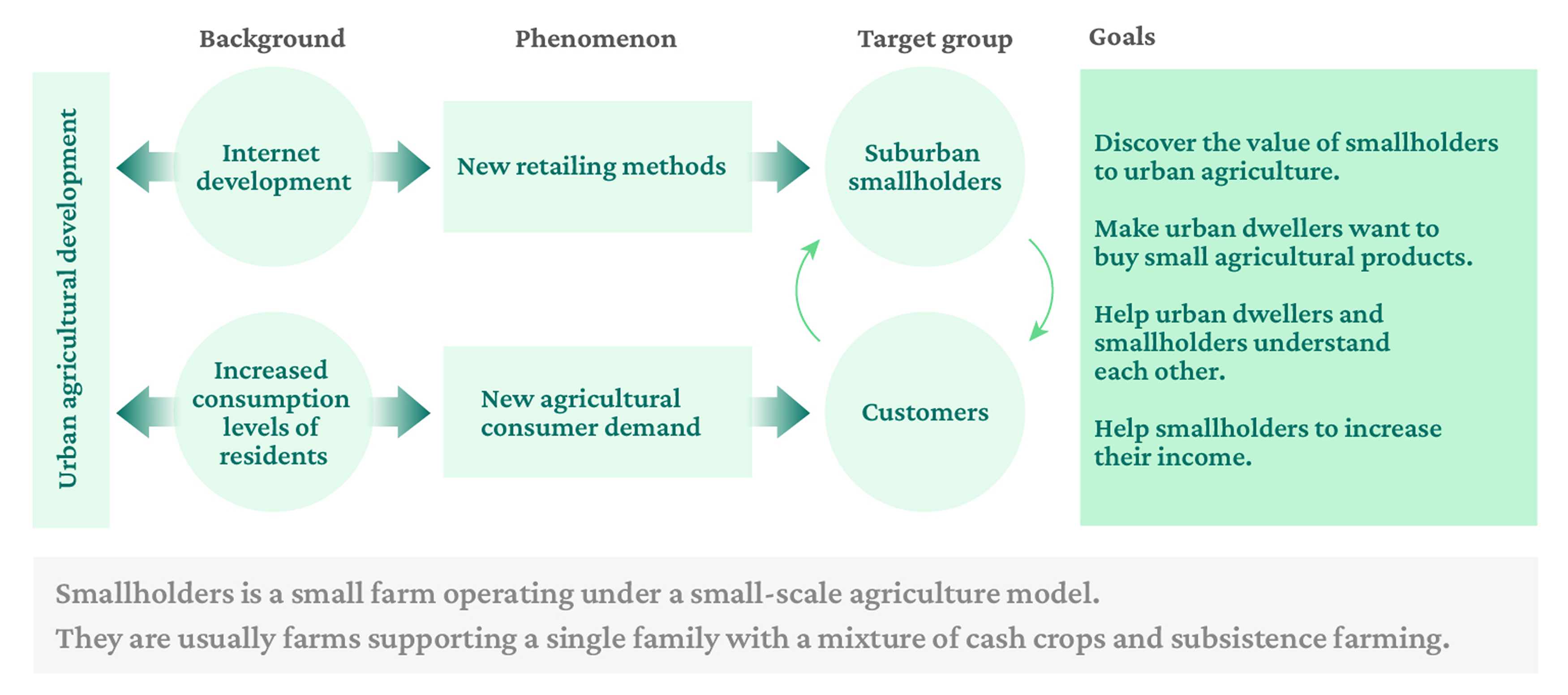
This research plan investigates the digital consumer transformation in urban agriculture, focusing on how smallholders can adapt to changing market demands. It examines the challenges and untapped value of smallholder farming, the reasons behind consumers’ reluctance to buy their products, and the emerging needs of urban consumers. Through desk research, policy review, and brand storytelling analysis, the study aims to identify strategies that connect smallholders with new urban agricultural trends, enhance brand competitiveness, and position smallholder farming as a valuable contributor to urban agriculture

Discovery - Famers
- Smallholders in urban argiculture: Through desk research, I identified the characteristics, strengths, roles, and unique values of smallholder agriculture in China within the context of urban agricultural development
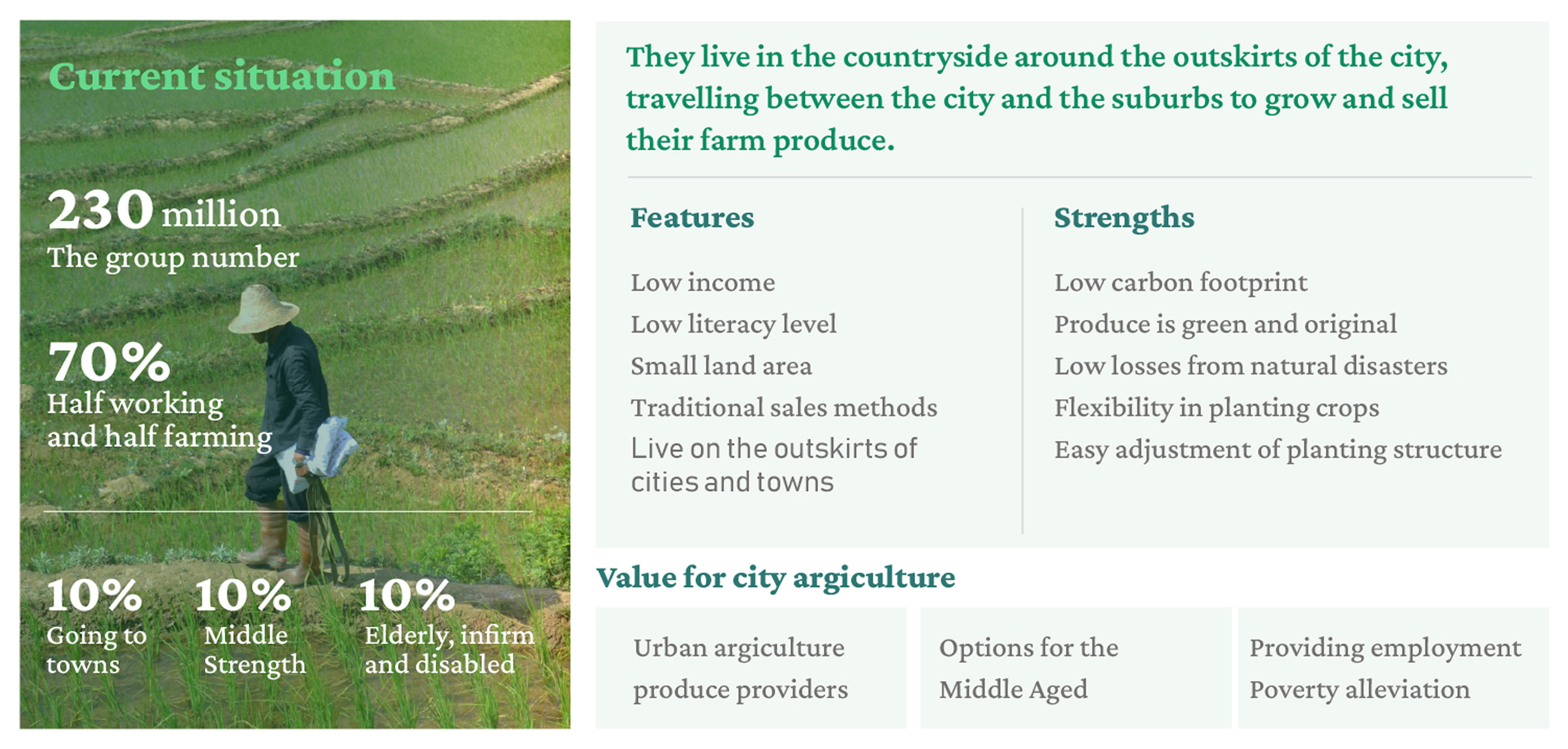
- Daily Routing of Them
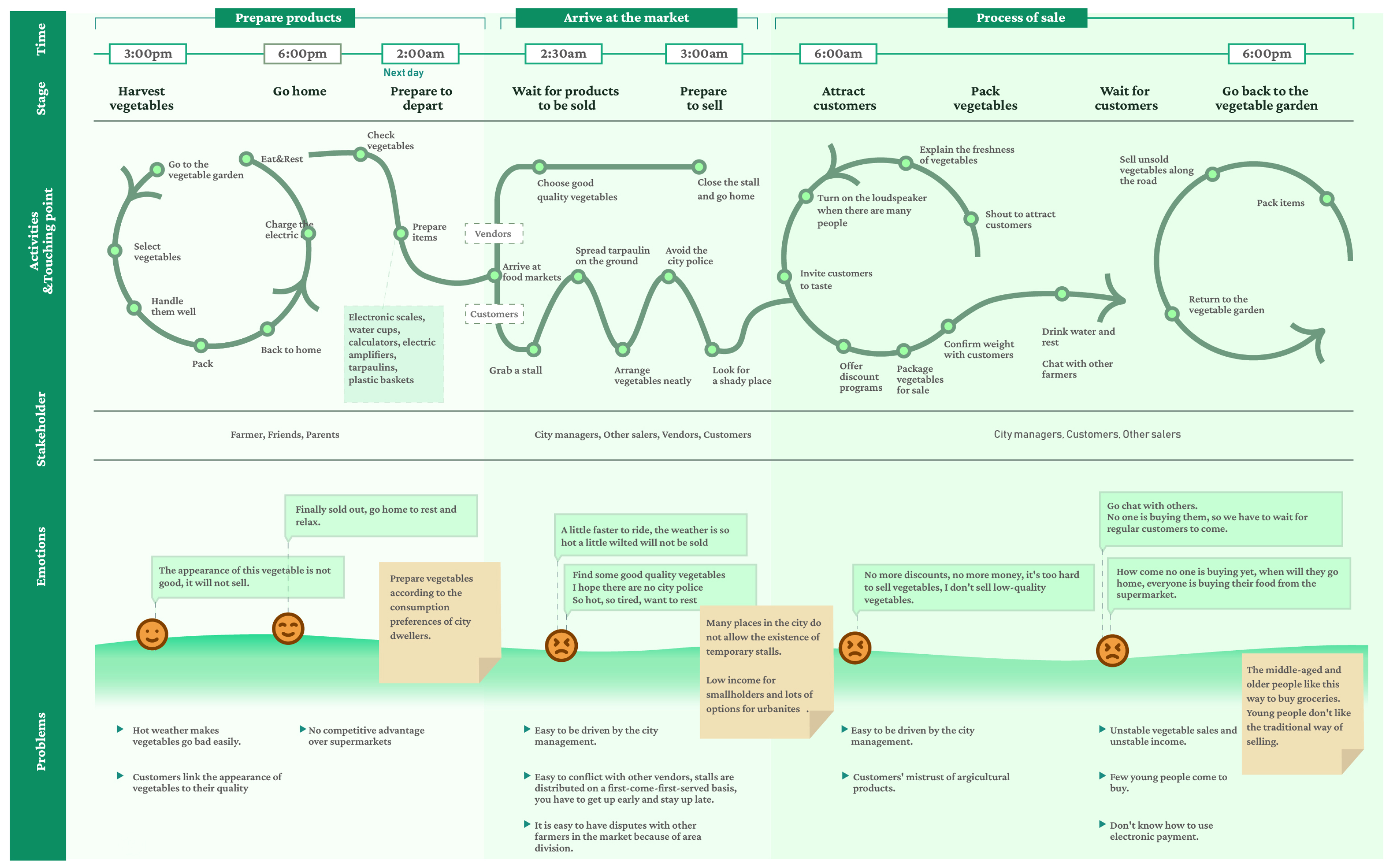
Persona: Through one-on-one research, I gathered basic information about these farmers and the characteristics of their farming practices and products, which helped me identify key issues for further investigation
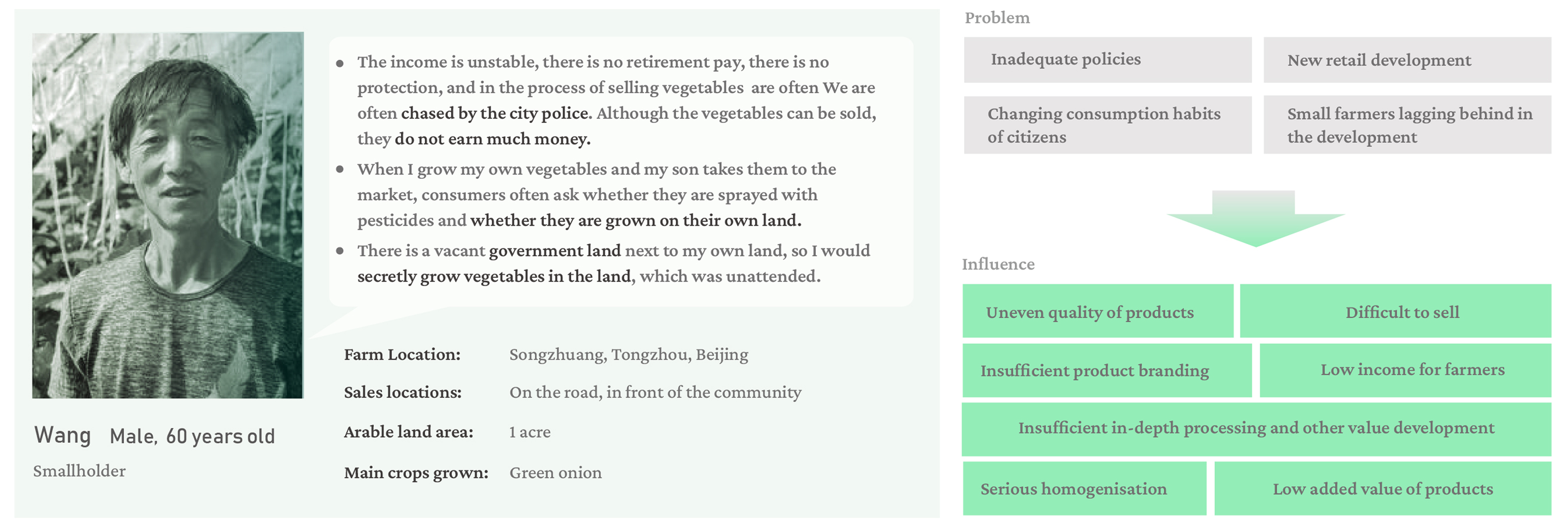
Findings:
- Small scale and low value: Small farmers operate on a limited scale, with low resilience and low added value in their agricultural products.
- Insufficient integration of modern elements: While internet and community agriculture are developing rapidly, modern factors such as technology, finance, and digital platforms are not yet fully integrated into agricultural growth.
- Lack of policy attention and support: Small farmers receive insufficient attention from relevant departments, making it difficult for them to fairly benefit from development opportunities.
- Profits taken by middlemen: Although products are green and sustainable, they are sold at low prices, with the price difference captured by multiple middlemen.
Discovery - Consumers
Through questionnaires and interviews, I explored the evolving channels and methods urban consumers use to buy produce, the potential problems they encounter, and their attitudes toward purchasing products from smallholders
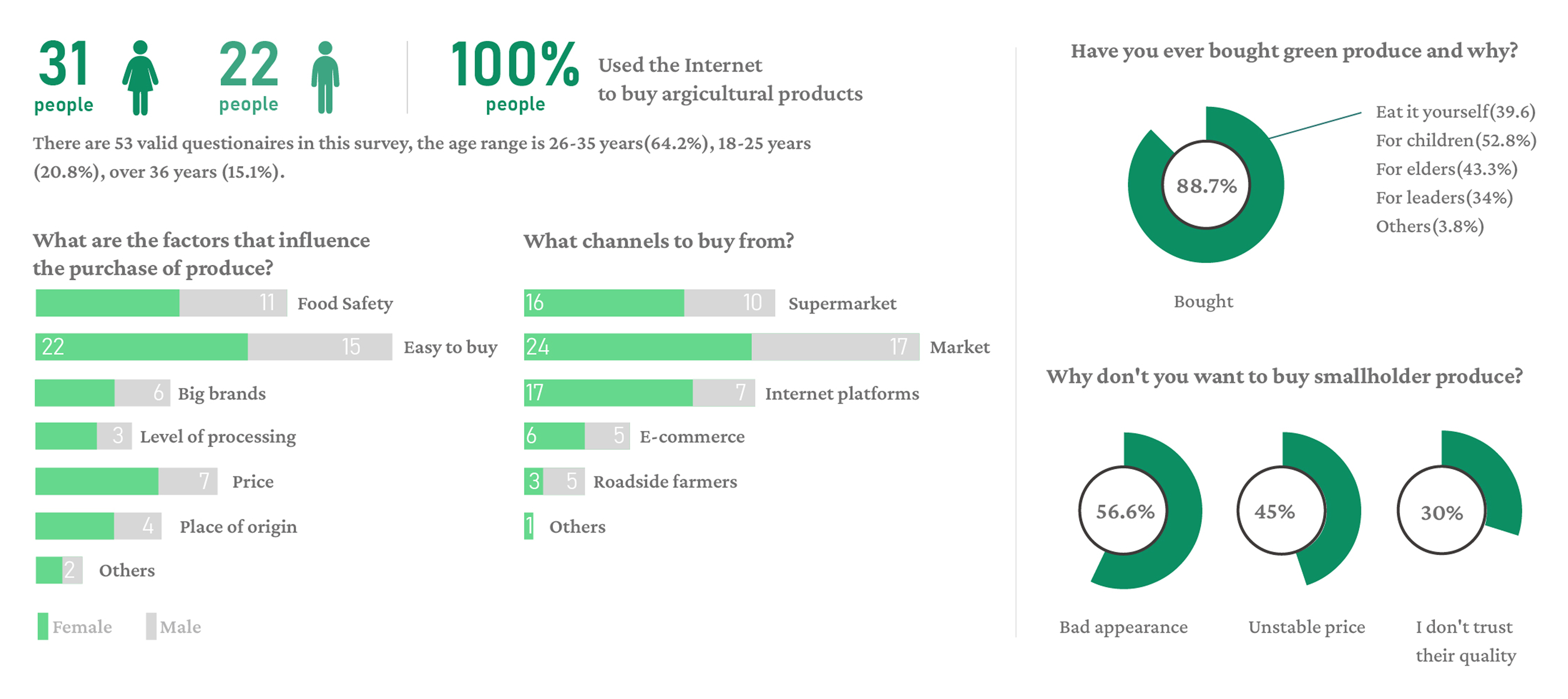
Needs & offering map
This Needs and Offering Map identifies how smallholder capabilities and consumer expectations align across transport, selling, and consumption—highlighting opportunities to improve freshness, trust, convenience, and value while fostering a more direct and sustainable agricultural marketplace
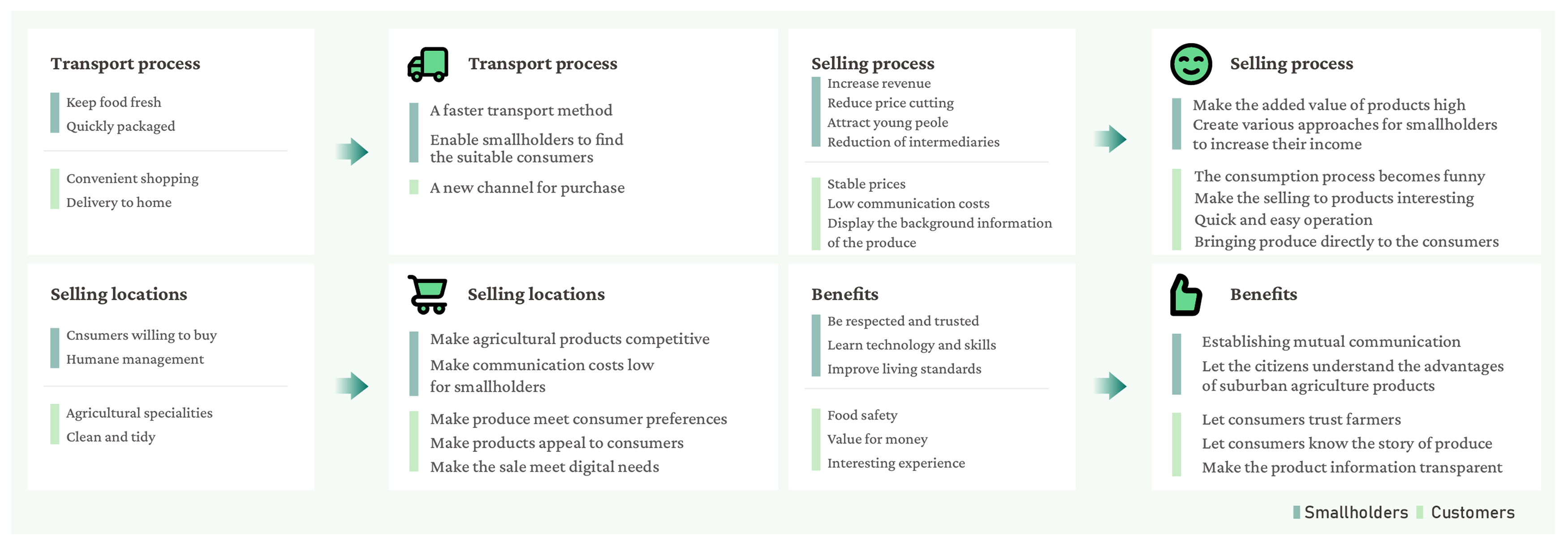
Ecology Map
This Ecology Map outlines a service ecosystem that connects smallholders and consumers through both online and offline experiences. It explores opportunities for co-branding, customised agricultural products, interactive planting activities, and direct sales, creating value for consumers while strengthening the economic and cultural sustainability of smallholder farming
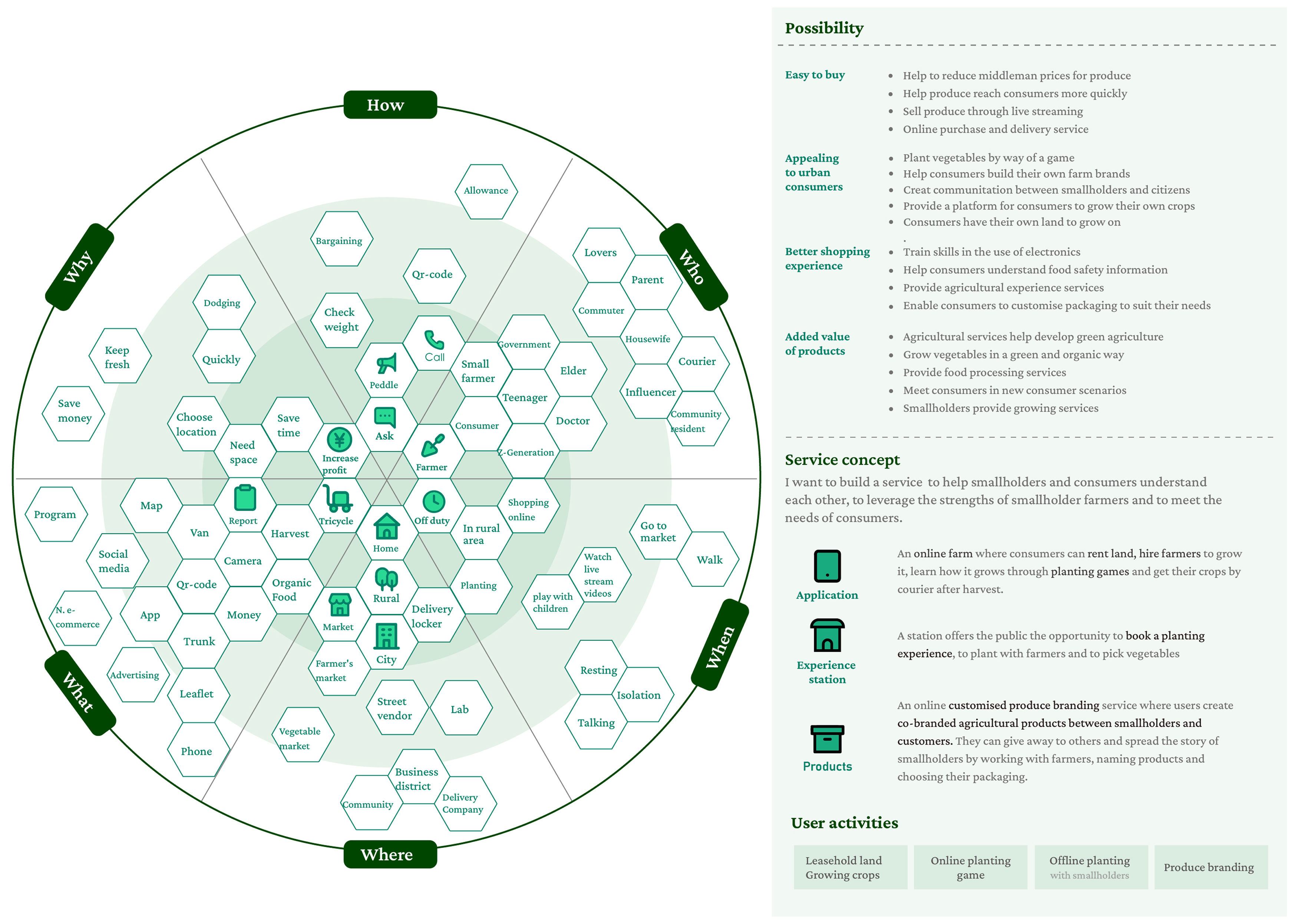
Service Blueprint
This Service Blueprint maps a holistic agricultural service that bridges smallholders and consumers through both online and offline touchpoints. From leasing land and co-branding produce to interactive planting experiences, live-stream sales, and direct delivery, the service leverages smallholder strengths to meet diverse consumer needs while reducing intermediaries and fostering mutual understanding
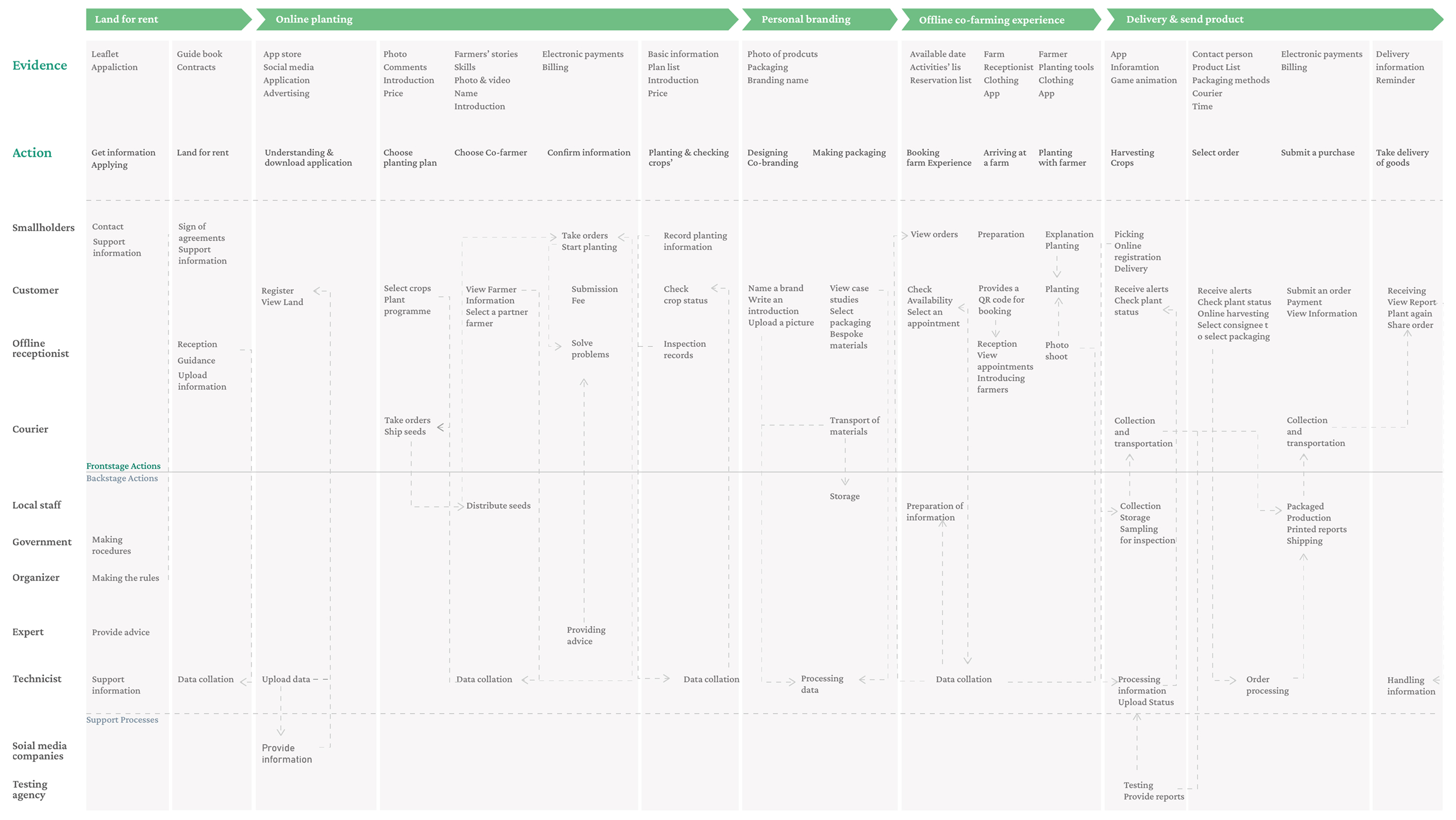
System Map
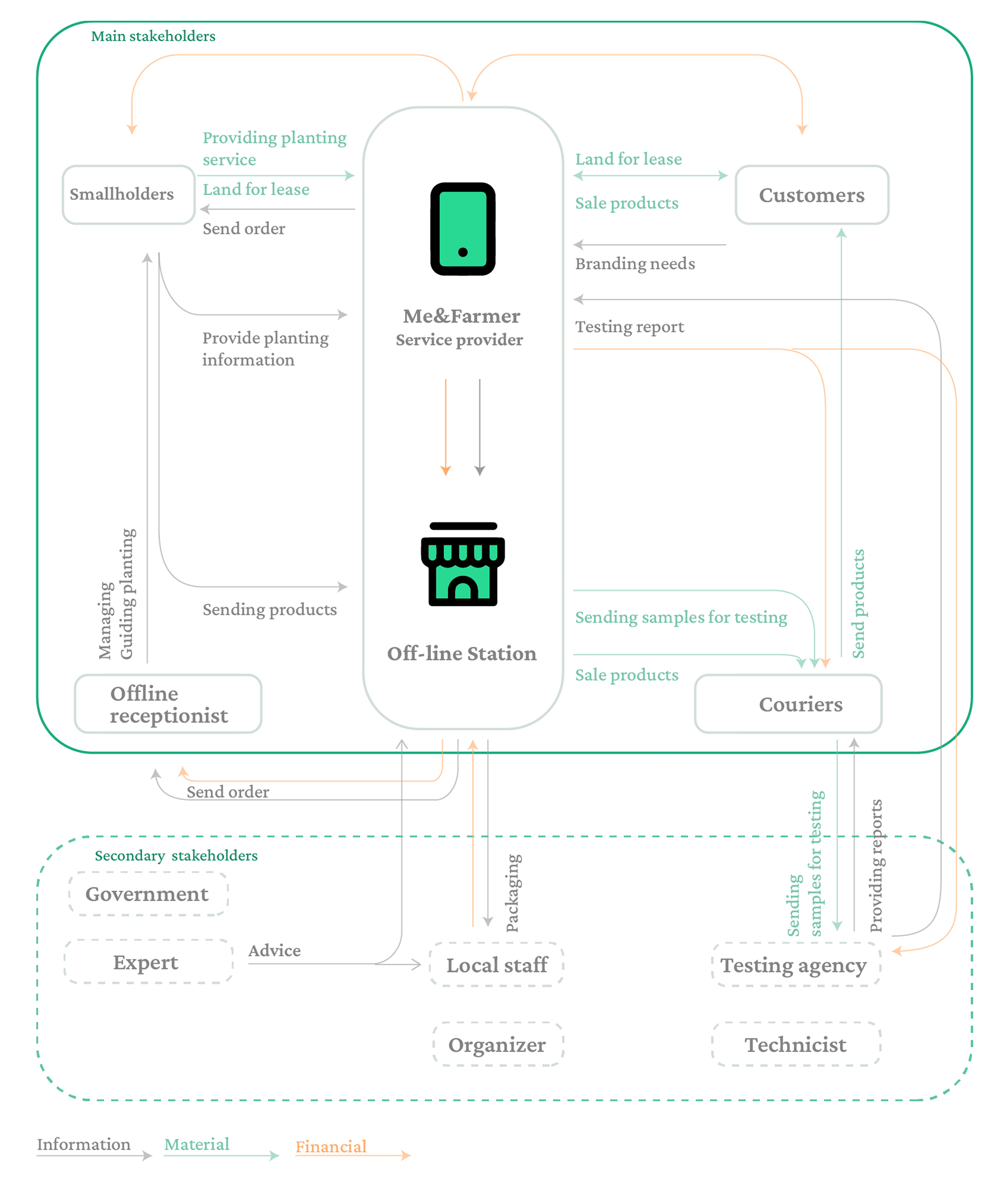
Application Design

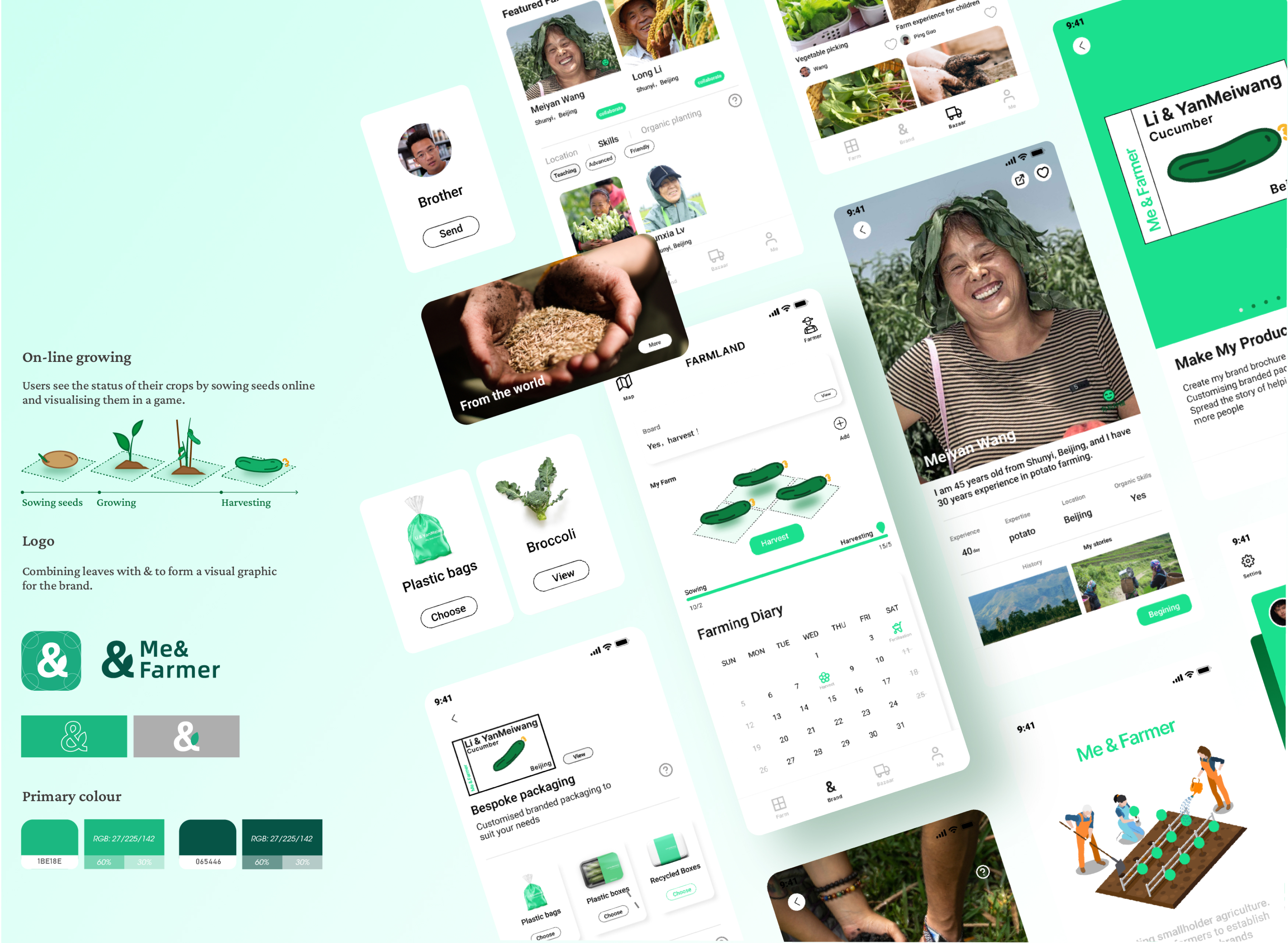
This project envisions a connected agricultural ecosystem where smallholders and consumers collaborate directly, blending digital tools with hands-on experiences. By reducing intermediaries, enhancing transparency, and creating engaging ways to grow, brand, and share produce, it offers a sustainable model that values both the farmer’s craft and the consumer’s experience—bringing agriculture closer to everyday life
